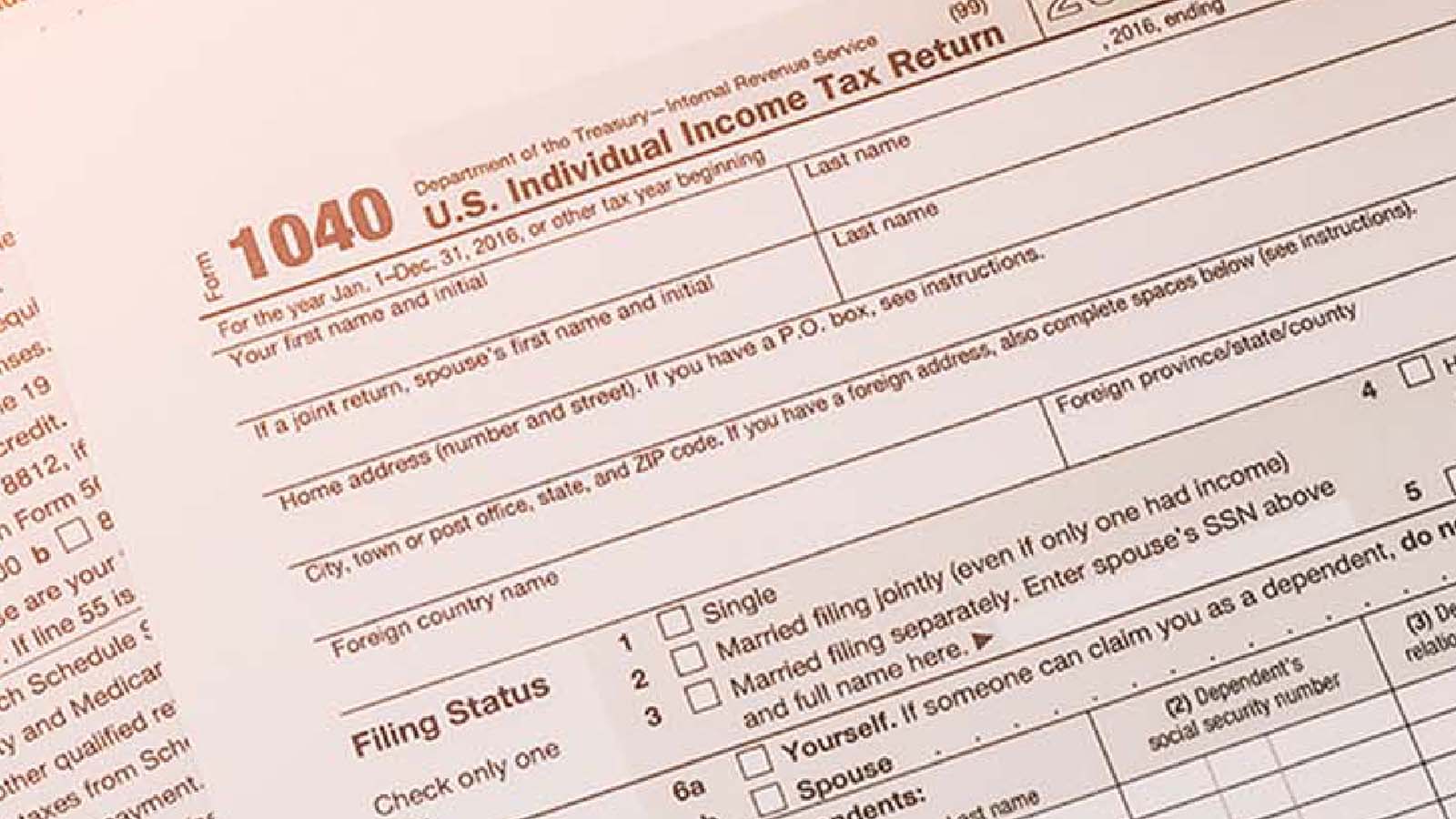2023 Year-End Financial and Tax Planning Strategies for Individuals
Never miss a thing.
Sign up to receive our insights newsletter.

An abundance of financial and tax planning strategies exist for 2023, despite a year that many characterized as uncertain due to inflation, higher interest rates, increasing geopolitical risk and the threat of economic recession. Despite many sectors calling for significant tax law changes, the divided federal government and the coming presidential election year make such changes less likely. These factors make traditional year-end financial and tax planning strategies all the more important for 2023.
Year-end financial and tax planning strategies for 2023 include:
- Projecting the amount of tax due for 2023 and estimating 2024 income
- Funding retirement plans
- Making charitable contributions
- Making annual exclusion gifts
- Funding a health savings account
- Recognizing capital losses to offset capital gains (tax loss harvesting)
- Evaluating your portfolio
- Considering deduction planning for closely-held businesses operated as pass-through entities
- Determining the impact of the excess business loss limitation
- Withdrawing a Required Minimum Distribution (RMD)
- Checking your access to cash
- Evaluating your insurance policies
- Assessing the interest rates on your debt
- Considering Roth IRA conversions
- Creating an online account with the Internal Revenue Service (IRS)
Project Amount of Tax Due for 2023
While there is still time remaining in 2023, now is a great time to project your 2023 income tax liability and determine if your withholding and/or estimated tax payments are sufficient to cover that tax liability. Making changes to your fourth quarter estimated tax payment (due January 16, 2024) could help you prevent or mitigate penalties and a large balance due on April 15, 2024. The penalty rate for underpayment of estimated tax is now eight percent of the underpaid amount, which can result in substantial penalties.
Fund Retirement Plans
Fully funding your retirement plans is a key way to reduce your income tax liability. The elective deferral limit for employees who participate in a 401(k), 403(b) and most 457 plans is $22,500 for 2023 (increasing to $23,000 for 2024). The “catch-up” contribution limit for employees aged 50 and over who participate in a 401(k), 403(b) and most 457 plans is $7,500 for 2023. The catch-up is indexed for inflation beginning in 2024. With the “catch-up” contribution, these employees can contribute up to $30,000 to a 401(k), 403(b) or 457 plan for 2023 if over age 50 and $32,500 if over age 60. Elective deferrals for 2023 must be made by December 31, 2023. Beginning on January 1, 2025, employees aged 60 to 63 can make a catch-up contribution of the greater of $10,000 or 150 percent of the regular age 50 catch-up contribution limit.
The annual limit on contributions to a traditional IRA is $6,500 for 2023 ($7,000 for 2024), with an additional $1,000 catch-up contribution limit for individuals aged 50 and over. The $1,000 catch-up is indexed for inflation beginning in 2024. You should take note that an income tax deduction for a contribution to a traditional IRA will be disallowed if either you or your spouse participates in a retirement plan at work and your modified adjusted gross income (MAGI) equals or exceeds a specified amount, determined as follows:
- For a single individual who is covered by a workplace retirement plan, $83,000 for 2023
- For a married couple filing a joint return where the spouse making the IRA contribution is covered by an employer retirement plan, $136,000 for 2023
- For a married couple filing a joint return where the spouse making the IRA contribution is not covered by an employer retirement plan, but the non-contributing spouse is covered, $228,000 for 2023
- For a married individual that files a separate return and is covered by a workplace retirement plan, $10,000 for 2023
The limit on annual contributions to a Roth IRA is also $6,500 for 2023, but you can only make a direct contribution to a Roth IRA if your MAGI is below a certain amount. Specifically:
- For single individuals and heads of household, the MAGI limit is $153,000 for 2023 ($161,000 for 2024).
- For married couples filing jointly, the MAGI limit is $228,000 ($240,000 for 2024).
- For a married individual filing a separate return, the MAGI limit is $10,000 for 2023 (and for 2024).
If you have net earnings from a self-employment activity conducted as a sole proprietorship or from director fees, you may be able to contribute up to $66,000 to a Simplified Employee Pension (SEP) plan for 2023 ($69,000 for 2024) and claim an income tax deduction for the contribution.
Make Charitable Contributions
‘Tis the season for giving, and one way to give and reduce your 2023 income tax liability is by making charitable contributions. In most cases, you can claim an income tax deduction of up to 60 percent of your adjusted gross income for cash contributions to a public charity. (After 2025, the limit will be reduced to 50 percent of adjusted gross income.) You can also usually claim an income tax deduction of up to 30 percent of your adjusted gross income for non-cash contributions to a public charity. Contribution limits for private foundations are 30 percent for cash and 20 percent for non-cash donations. Contributing appreciated property you have owned for more than one year to a charitable organization provides an extra tax benefit as you receive an income tax deduction for some or all of the value of the property contributed and do not pay tax on the gain inherent in the property contributed.
If you are aged 70 ½ or older, you can donate up to $100,000 in 2023 to one or more charities directly from a traditional IRA. (The $100,000 maximum amount will be indexed for inflation beginning in 2024.) This donation, known as a “qualified charitable distribution,” does not qualify for an income tax deduction, but you won’t be subject to income tax on the IRA distribution. A qualified charitable distribution is often a tax-efficient way to take a required minimum distribution (RMD) from your IRA if you don’t need the funds.
Another way to make charitable contributions is to make an irrevocable donation of cash or other assets to a donor-advised fund (DAF). Under a DAF, you can take a tax deduction of up to 50 percent of adjusted gross income for the donation into a “charitable” investment account, which gives you the opportunity to direct donations from the fund to IRS qualified public charities. Donating to a DAF also allows you to shield highly appreciated assets from capital gains taxation. Given the many requirements of DAFs, you should consult with your financial planner, tax advisors and attorneys when considering establishing a DAF.
Make Annual Exclusion Gifts
A tax-efficient way to reduce your estate is to make annual exclusion gifts. You can exclude gifts of up to $17,000 in 2023 ($18,000 in 2024) to as many separate donees as you wish from the gift tax (and potentially from the generation-skipping transfer tax). The value of these gifts is removed from your estate for estate tax purposes.
Fund a Health Savings Account
A Health Savings Account (HSA) is a tax-advantaged savings account that you can use to pay certain qualified medical expenses. You receive an income tax deduction for funds contributed to an HSA, and the funds and the earnings on such funds are not subject to Federal income tax, as long as they are used to pay for qualified medical expenses. HSAs are available only to individuals that are enrolled in a high-deductible health plan, which have lower premiums and higher deductibles than other plans. Employees should check with their employer’s benefit plan to determine eligibility for these plans.
During your year-end planning, you should review the coverage in your health plan to ensure that you are enrolled in an HSA, and if you are enrolled, consider maximizing contribution amounts. For 2023, contributions to an HSA are limited to $3,850 for self-only coverage and to $7,750 for family coverage. An additional $1,000 “catch-up” contribution can be made by individuals aged 55 or older. If you are eligible to contribute to an HSA and have not made the maximum contribution for 2023, you should consider doing so. HSA funds are yours to keep – unlike a flexible spending account, you do not forfeit unused money in your HSA at the end of the year.
Notably, there is a significant increase in contribution limits for 2024. Contribution limits increase to $4,150 for self-only coverage and to $8,300 for family coverage. There is also the additional $1,000 “catch-up” contribution for individuals aged 55 or older.
Recognize Capital Losses to Offset Capital Gains
Consider selling your investments to reduce your taxable income for 2023. This strategy, known as “tax loss harvesting,” can work two ways. You can sell investments that have declined in value to result in a loss to offset some or all of your capital gains. You can also sell investments that have appreciated in value, to realize gains that will be offset by other losses. These transactions would have to be completed before December 31, 2023. You should, however, take care to avoid the “wash-sale” rule, which prohibits claiming a loss on the sale of a stock or a security if the same or “substantially identical” stock or security is purchased either 30 days before or after the sale date.
Evaluate Your Portfolio
While considering “tax loss harvesting” strategies, evaluate whether you have the right investment allocation in your portfolio. Overall, you should determine whether your risk profile is optimal for your financial goals.
Consider Deduction Planning for Closely-Held Businesses Operated as Pass-Through Entities
If your operating business is in a pass-through entity structure (LLC, partnership or S-corporation), consider whether additional deductions can be taken prior to year-end. Common techniques include accelerating fixed asset purchases before year-end to claim bonus depreciation (80 percent in 2023, decreasing to 60 percent in 2024 and 40 percent in 2025), accelerating the payment or accrual of year-end payroll and bonuses into December to claim deductions in 2023 and accruing or paying operating expenses planned for early January 2024 in December 2023.
Conversely, if you are subject to the excess business loss limitations (discussed below) or anticipate significantly higher income in 2024, consider postponing expenses to the first few days of 2024 or electing out of bonus depreciation.
Determine Impact of the Excess Business Loss Limitation
If you incur an “excess business loss” in 2023 from one or more trades or businesses, you may not be able to deduct all losses for 2023. An excess business loss is the amount by which the total deductions attributable to all your trades or businesses exceed your total gross income and gains from those trades or businesses plus a threshold amount (that is adjusted annually for inflation). The threshold amounts for 2023 are $289,000 for single individuals and $578,000 for married individuals that file a joint return. Disallowed excess business losses are treated as a net operating loss carryover to the following year.
So, if you anticipate incurring a net business loss in excess of $289,000/$578,000 for 2023, confirm whether or not some of that loss will be disallowed for 2023. Otherwise, you may be in for an unpleasant income tax surprise come April 15, 2024.
Withdraw a Required Minimum Distribution
An RMD is the minimum amount that you must withdrawal from your traditional IRA each year beginning with the year that you turn 72 (or 70 ½ if you turned 70 ½ before January 1, 2020.) The RMD age has been increased to 73 beginning in 2023 and 75 beginning in 2033. A RMD for 2023 is calculated by dividing your IRA balance as of December 31, 2022, by a life expectancy factor that the IRS publishes in Publication 590-B (“Distributions from Individual Retirement Arrangements (IRAs)”).
If you fail to withdraw some or all of your RMD in any given year, you may be subject to a penalty equal to 50 percent of the amount that was not withdrawn. If you are required to withdraw an RMD for 2023, make sure you do so by December 31, 2023.
Check Your Access to Cash
As part of your financial planning for 2024, determine if you have set aside enough cash for an emergency. Quick access to cash can help you during a natural disaster or other type of emergency in which banks or the payment system may not be available. With higher interest rates, consider holding a bit more cash than usual without significantly reducing your overall returns. Having cash available also allows you to execute additional investments or transactions opportunistically when they arise. With the rise in interest rates, this could prove favorable over a borrowing alternative in certain transactions.
Evaluate Insurance Policies
A year-end review should also include an evaluation of your insurance policies. Any significant changes over the past year could necessitate changes to the types of insurance, level of coverage and beneficiaries.
Review Your Estate Plan
Another year-end review that can often go overlooked is to your estate plan. This includes making sure you have a power-of-attorney and medical directive, as well as the correct beneficiaries. You should also review the basic components of your will and trust, among other considerations.
Assess Rates on Debt
You might want to review current interest rates on any outstanding debt to determine whether to refinance or pay off outstanding debt.
Consider Roth IRA Conversions
Consider converting your pre-tax retirement accounts into after-tax Roth accounts. With a Roth account, you contribute to your retirement fund with after-tax dollars, but unlike traditional retirement accounts, that money is not taxed upon withdrawal. Roth IRAs are also exempt from RMDs. Given the requirement to pay taxes now, however, a Roth conversion could push you into a higher tax bracket in the current year.
Create an Online Account with the Internal Revenue Service
Creating an online account with the IRS facilitates your ability to obtain information from the IRS. For example, via an online account you can:
- View the amount of tax you owe for a particular tax year
- View five years of payment history, including estimated tax payments
- View any pending or scheduled tax payments
- View key data from your most recently filed tax return
- View any authorization requests from tax professionals
- Approve and electronically sign a power of attorney
- Request an account transcript
- View your Identity Protection PIN (IP PIN) and request a new IP PIN
You can create an online account by going to www.irs.gov and:
- Click on the “Sign in to your account” link
- Click on the “Sign in to your online account” link
- Click on the “ID.me create an account” link
For more information about individual tax planning contact us or visit our Family Office and Private Client Services pages.
©2023


